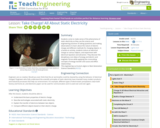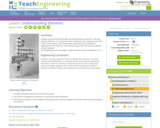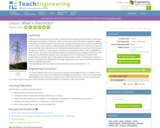
29 Results


Describe the $ifference between the subatomic particles, including their masses, locations, and charges. This lesson is 2 of 7 in the series titled "Subatomic Particles."
- Subject:
- Science
- Material Type:
- Lesson
- Provider:
- Sophia Learning
- Date Added:
- 08/07/2023

This lesson will introduce the subatomic particles and explain where they are located and how they interact. It is 4 of 7 in the series titled "Subatomic Particles."
- Subject:
- Science
- Material Type:
- Module
- Provider:
- Sophia Learning
- Date Added:
- 12/01/2023

Describe the difference between the subatomic particles, including their masses, locations, and charges. This lesson is 5 of 7 in the series titled "Subatomic Particles."
- Subject:
- Science
- Material Type:
- Module
- Provider:
- Sophia Learning
- Date Added:
- 12/01/2023

This lesson will introduce the subatomic particles and explain where they are located and how they interact. It is 6 of 7 in the series titled "Subatomic Particles."
- Subject:
- Science
- Material Type:
- Module
- Provider:
- Sophia Learning
- Date Added:
- 12/01/2023

Students come to understand static electricity by learning about the nature of electric charge, and different methods for charging objects. In a hands-on activity, students induce an electrical charge on various objects, and experiment with electrical repulsion and attraction.
- Subject:
- Engineering
- Science
- Material Type:
- Activity/Lab
- Lesson Plan
- Provider:
- TeachEngineering
- Provider Set:
- TeachEngineering
- Author:
- Daria Kotys-Schwartz
- Denise Carlson
- Joe Friedrichsen
- Malinda Schaefer Zarske
- Sabre Duren
- Xochitl Zamora Thompson
- Date Added:
- 09/18/2014

This lesson plan examines the properties of elements and the periodic table. Students learn the basic definition of an element and the 18 elements that build most of the matter in the universe. The periodic table is described as one method of organization for the elements. The concepts of physical and chemical properties are also reviewed.
- Subject:
- Chemistry
- Engineering
- Science
- Material Type:
- Activity/Lab
- Lesson Plan
- Provider:
- TeachEngineering
- Provider Set:
- TeachEngineering
- Author:
- Brian Kay
- Daria Kotys-Schwartz
- Janet Yowell
- Malinda Schaefer Zarske
- Date Added:
- 09/18/2014

Students are introduced to the concept of electricity by identifying it as an unseen, but pervasive and important presence in their lives. They are also introduced to the idea of engineers making, controlling and distributing electricity. The main concepts presented are the science of electricity and the careers that involve an understanding of electricity. Students first review the structure of atoms and then learn that electrons are the particles behind electrical current and the motivation for electron movement. They compare conductors and insulators based on their capabilities for electron flow. Then water and electrical systems are compared as an analogy to electrical current. They learn the differences between static and dynamic forms of electricity. A PowerPoint(TM) presentation is included, with review question/answer slides, as well as assessment handouts to practice using electricity-related terms through storytelling and to research electricity-related and electrical engineering careers.
- Subject:
- Engineering
- Science
- Material Type:
- Lesson Plan
- Provider:
- TeachEngineering
- Provider Set:
- TeachEngineering
- Author:
- Andrew Palermo
- Cristian Heredia
- Lauren Jabusch
- Date Added:
- 10/14/2015